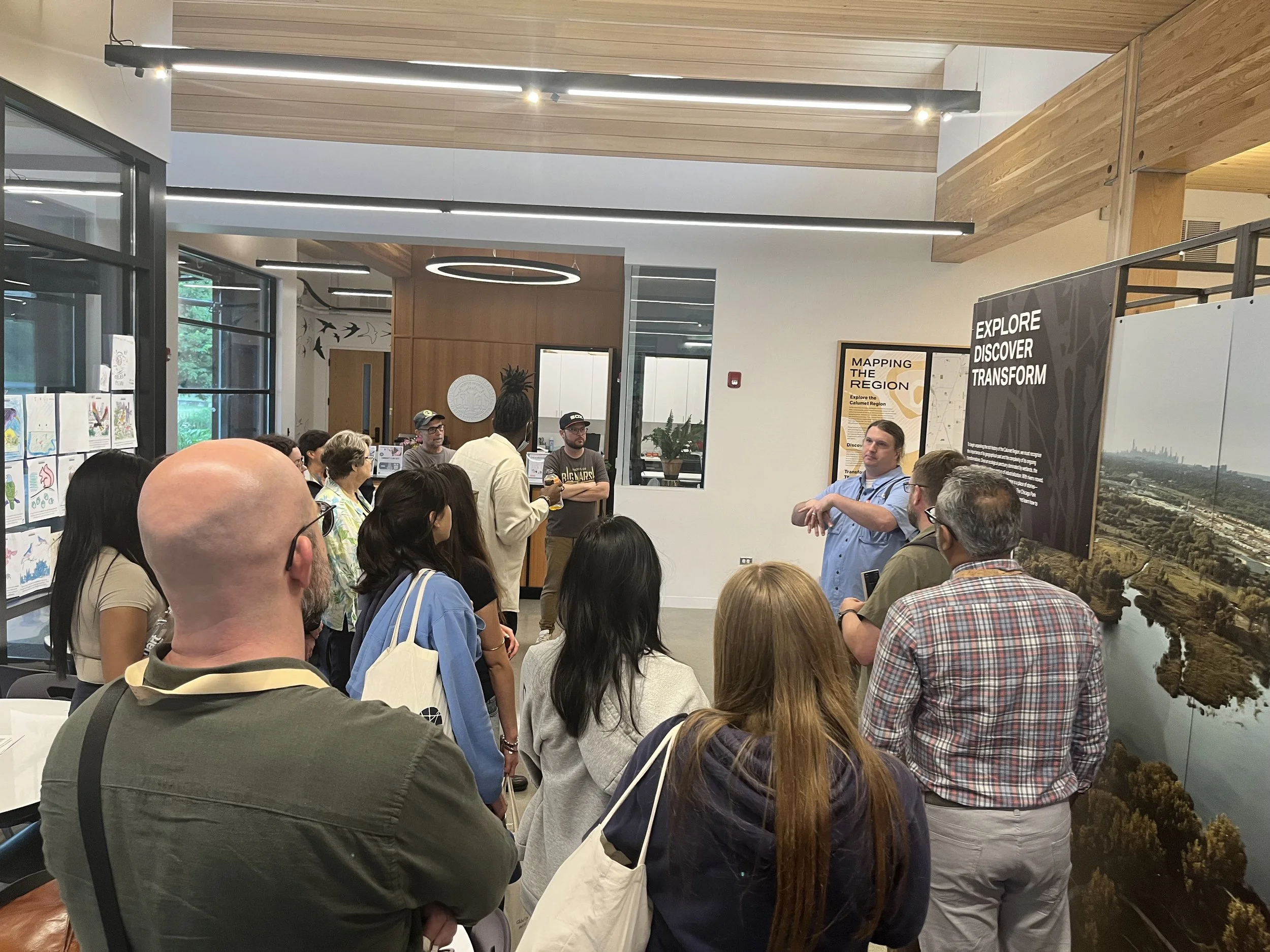"Spring" Into Sustainability: Rethinking Lawns
Photo credit: Liz Anna Kozik
The "Rethinking Lawns" guide challenges traditional lawn practices and advocates for sustainable alternatives that promote biodiversity and environmental health.
As signs of spring appear across the Chicago area, many businesses and residents are firing up their lawn care equipment and checking their sprinkler systems.
But wait, not so fast, says 2022 Walder Foundation Biota Award Recipient Rebecca Barak, Ph.D., and her colleagues Liz Anna Kozik, Ph.D., Lauren Umek, Ph.D., and Rebecca Tonietto, Ph.D.
Recently (February 2025), Barak and colleagues released “Rethinking Lawns: A Guide to Lawn Alternatives” online and presented key findings at Wild Things 2025, a biennial Midwest conference focused on environmental conservation.
The "Rethinking Lawns" guide challenges traditional lawn practices and advocates for sustainable alternatives that promote biodiversity and environmental health.
Key insights of the guide include:
Environmental Impact of Traditional Lawns: Lawns cover approximately 50 million acres in the United States, requiring significant resources for maintenance including water, fertilizers, and pesticides.
Alternative Ground Covers: Incorporating plants like white clover and fine fescue can reduce maintenance needs and enhance soil health.
Native Plant Integration: Replacing traditional lawns with native species supports local ecosystems, offers food and shelter for wildlife, and contributes to climate change resilience.
Barak explains that adopting these alternative lawncare practices can transform lawns into sustainable landscapes that benefit both people and the environment over time.
“By adopting alternative lawn practices, under-utilized lawns can transform from what they currently are—spaces that consume a lot of lawnmower gas, water, and herbicides—into spaces that will make Chicagoland better for people and nature,” said Barak. “In the short term, changing lawn species will provide beauty for people and resources for pollinators. Over time, we think that conversion of lawn into more diverse plantings that include native plants could contribute to a reduction in the urban heat island effect, a reduction in flooding, and a reduction in watering demands.”




Outside of lawn conversions, Kozik shared related small steps that can make a difference in our collective effort to tackle the biodiversity crisis.
“We’ve found from our lawn work that taking many small steps adds up quickly. Something as simple as mowing once a month instead of once a week can make a major impact. This effect is multiplied when we work with our neighbors.”
Barak, Kozik, and other colleagues have not left their research findings on their office shelves—they've engaged communities across Chicago. In 2024, they partnered with Sojourner Zenobia for a performing arts presentation called “Rewilding the Queen Lawns” at the Chicago Botanic Gardens; presented at a variety of garden clubs and libraries; worked with the Chicago Botanic Gardens seed bank to grow sedges; and supported college students who are engaged in student research about lawncare in residential Evanston.
Through these community engagement efforts, both Barak and Kozik have learned some really important things.
“One surprising thing has been just how much people are interested in chatting about lawns,” shared Barak. “Many people seem ready to make changes in how they care for their lawn. We have had many offers from people ready to give us a new research space in their yards!”
Kozik adds, “Each and every community member we interact with shares a new perspective on different needs and priorities that call for a different type of alternative lawn. Rather than replacing old sod with a different type of sod, we’ve found that what the community needs is a buffet of options. Some people are ready to tear out their whole lawn all at once with their own hands, others are willing to invest great sums of money to help their environment. Others are just busy folks who want to make changes, but don’t have the time nor money to do anything too big. Our outreach, therefore, has been framed around creating a menu of options, rather than the one perfect lawn replacement.”
Moving forward, Barak, Kozik, and other colleagues will continue building off of their Biota Award research project. They received a grant from the National Science Foundation and the Paul G. Allen Family Foundation that will allow for increased research on ecosystem services within Chicago parks, alongside the ability to conduct seeding experiments. They also will continue working with students from the Chicago Botanic Garden, Northwestern’s program in plant biology and conservation, and other Chicago academic institutions.
Stay engaged with their important work and share resources from their research with your network: rethinkinglawns.com/.
Stay engaged with efforts from our Environmental Sustainability pillar: walderfoundation.org/environmental-sustainability
Get more stories like this delivered to your inbox.
Sign up with your email address to receive news and updates.










